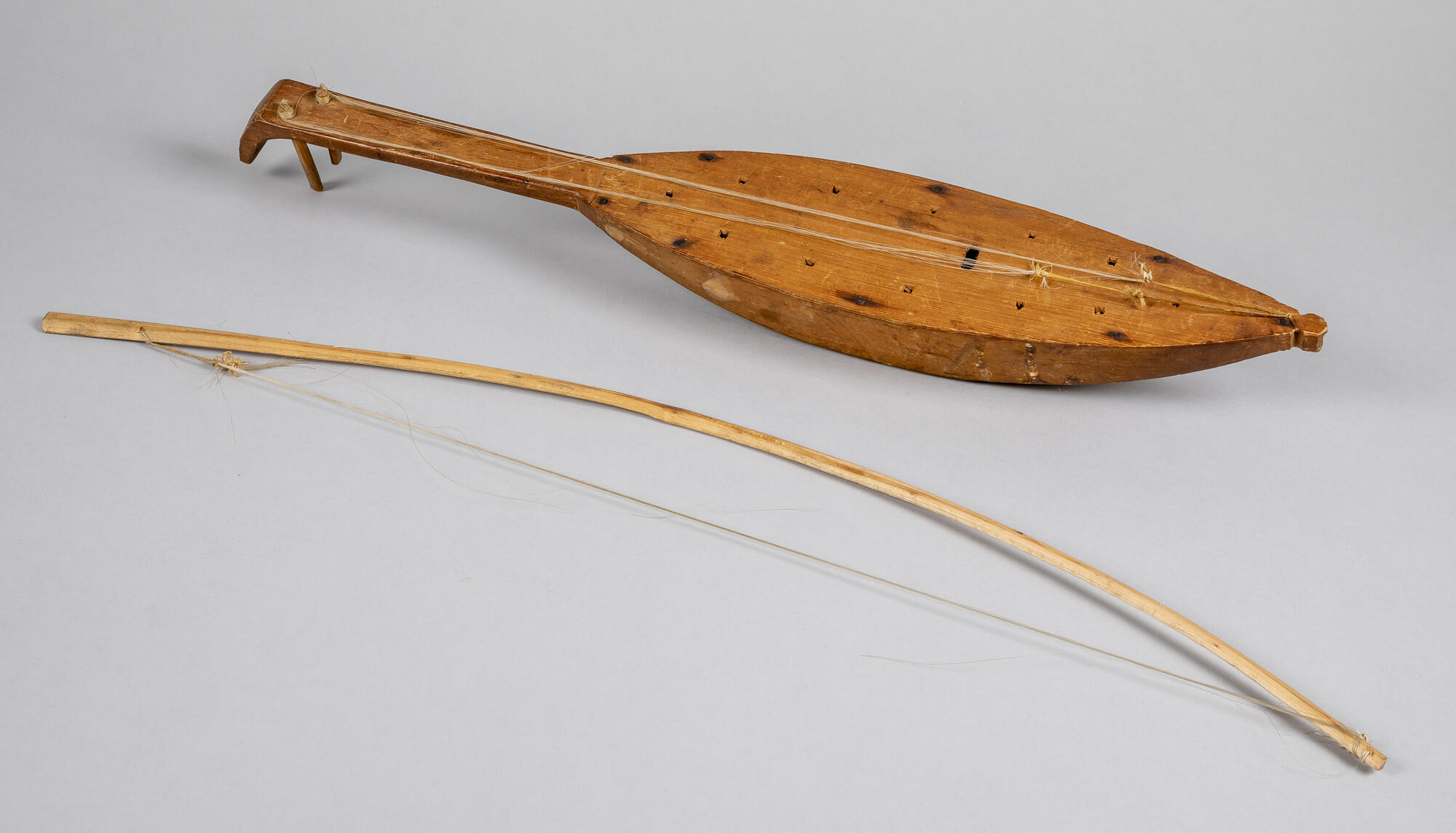The nyn-yukh is a one- or two-string bowed musical instrument. The version of the Eastern Khanty has two strings and the version of the Sosva Mansi has one. The Khanty word “nyn” means “woman” and “yukh” means “tree”. This instrument is also called the “Khanty violin” or the “Mansi violin”.
The nyn-yukh is primarily a men’s instrument, however there is evidence that women also played it. They would do so in a seated position, leaning the bottom end of the instrument on their knees, and holding the strings with one hand and driving the bow across them with the other.
The body of the nyn-yukh is made of coniferous trees. The hair of the bow is horsehair. The strings are made of deer veins or horsehair.
The instrument plays song melodies or tunes. Unlike other stringed instruments (nars-yukh, sankvyltap and “crane”), the nyn-yukh was never assigned sacred meaning or used in rituals.
A traditional Khanty nyn-yukh is a two-string bowed instrument made of wood. The instrument has a slightly elongated oval-shaped body made of a hollowed out piece of wood. The body is semi-oval in cross section with its flat side at the top. A thin flat ellipsoid sound board with three drilled sound holes is nailed to the body with small nails. At the bottom there is a triangular stump with round through holes on the sides for attaching strings. The neck is made of a solid piece of wood. It is long, has an even thickness and width throughout its length. The cross section is rectangular with rounded edges. The head of the neck is flattened and slightly bent downwards, also rectangular in cross section with a rounded cut at the top. The head features two round through holes for the tuning pegs, which are rectangular wooden sticks with thickened ends and a pointed top.
The strings are made of fishing line. One end of the string is tied to a peg and the opposite is passed through the holes of the stump at the bottom. The strings are raised above the soundboard with a wooden trapezoidal wooden bridge with two grooves at the top.






